On DEI, One Real Challenge Lies Outside the Office Walls


More workplaces are beginning to reopen as U.S. businesses and their employees learn how to navigate around the risks of the COVID-19 pandemic. That re-population should put renewed pressure on companies to live up to diversity, equity and inclusion (DEI) pledges, now that employees are sharing the same physical space again. However, a new survey indicates that employers need to take a closer look at how DEI goals are perceived by the very people they are intended to include.
Insights from a specialist in workplace social interactions
The new survey comes from the firm Workhuman, which specializes in software-based management tools that improve employee performance, retention and engagement, in large part by focusing on the importance of employee recognition programs.
As described by the company, software including its social recognition offering is a research-based approach to workforce management that “makes people feel seen, heard, and appreciated for who they are and the work they do.”
“It is the foundation for creating a culture of positivity and excellence, empowering humans to do the best work of their lives,” Workhuman adds.
Editor's note: Be sure to subscribe to our Brands Taking Stands newsletter, which comes out every Wednesday.
If this sounds like a recipe for DEI initiatives, that is no accident. Workhuman emphasizes that social recognition complements and amplifies DEI goals.
“Companies investing in social recognition experience increased employee engagement, higher productivity, and better retention, all while uncovering actionable workplace insights around performance, diversity, equity, and organizational culture,” Workhuman states.
DEI and the big letdown
Sociologists, economists and other analysts have been picking apart the underlying factors contributing to the so-named “Great Resignation,” an unprecedented trend of employees choosing to quit their jobs during the COVID-19 pandemic.
For many employees the choice is not exactly a voluntary one. Many workers have had to leave the workforce in order to care for family members, for example.
However, in many other cases the search for a better compensation and a better work environment are the motivating factors.
As the new Workhuman survey indicates, employers should be forewarned that their record on DEI initiatives could be among those motivating factors. Some employees may leave, or may consider leaving, because they feel let down by their company in the DEI area.
Workhuman introduced the monthly survey under the name “Human Workplace Index” just three months ago, and the DEI issue has already emerged.
“Employee happiness is trending down for the third month, suggesting that employees are aware of what they want from their organizations, but aren’t seeing changes being made,” Sarah Bloznalis of Workhuman noted earlier this month. “One area where employee expectations are changing is around diversity, equity, and inclusion (DEI), the focus for this month’s Human Workplace Index.”
Bloznalis drew attention to the importance of digging into employee surveys in order to spot differences in their perception of DEI initiatives.
Overall, for example, 50 percent of employees in the most recent Workhuman survey said they feel “very valued” by their organization.
By gender and race, though, the responses were different.
“Broken down by gender, the majority response from women was “somewhat valued” (47 percent), while 64 percent of men reported feeling “very valued,” Bloznalis wrote. “This trend continues with race; the majority of People of Color (POC) stated they feel “somewhat valued” (46 percent), while more than half of white employees feel “very valued” (57 percent).”
A similar breakdown by gender and race emerges when employees are asked if they feel psychologically safe, meaning that they feel appreciated and respected. Likewise, the survey finds race and gender differences when employees are asked how they perceive the value their employer places on DEI.
Perhaps most telling of all is the stark difference that shows up when the survey asks employees about their organization’s progress on DEI.
“Overall, 71 percent of all respondents said their company has made noticeable progress around DE&I since last year. And despite this majority, 40 percent of [people of color] employees surveyed stated their company has not made noticeable progress,” Bloznalis explained.
Show appreciation — for real
The survey provides Workhuman with a strong selling point for its social recognition and other management tools.
“Now is the time to focus on improving the experiences of the employees who have stayed. A simple, yet effective way to do this is by showing appreciation on a frequent basis. The more you do, the more valued employees will feel,” Bloznalis explained, adding that “consistently listening and adjusting can help move the needle.”
That is all well and good as far as DEI goes within the company walls, but the upward swing in extremism across the U.S. indicates that employers also need to think far outside their workspaces.
Ignoring the role of elected officials in restricting voting rights while promoting anti-women and anti-LGBTQ legislation hardly seems an effective strategy for supporting a diverse workforce, especially not in light of the diversity pledges many companies made after the murder of George Floyd last year.
Numerous companies have also exposed themselves to charges of hypocrisy by providing financial support to legislators who stand alongside the mob of white supremacists who attacked Congress on January 6 earlier this year, in a failed attempt to overthrow the U.S. government.
Until more employers stand up and recognize that their political muscle makes a difference, employees will continue to seek work in spaces where “caring” is a serious effort that impacts their equal rights both in and outside the office walls.
Image credit: Clay Banks via Unsplash
AEG Breathes ‘15-Minute City’ To Life with London’s The O2


The O2 arena in London's Greenwich neighborhood.
As cities from Addis Ababa to Zagreb celebrate and reflect on the United Nations' World Cities Day, the concept of a community having all of its necessities within a 15-minute walking or biking radius is captivating cities all around the world, and for good reason. The 15-minute city is a deeply intentional, human-centered approach to building communities that are walkable, accessible, safe and, importantly, sustainable.
As populations steadily cluster toward city centers, developers, government officials and urban designers are racing to implement designs that further the 15-minute city. Among them is AEG, the world’s leading sports and live entertainment company, which has revitalized underused urban zones in Los Angeles, Berlin, and London into thriving sports and entertainment districts. At the center of its developments are world-class sports arenas that serve as the centerpieces for newly transformed communities bustling with shops, restaurants, bars, schools, green spaces and public transportation — all within a 15-minute walk from apartment and housing complexes.

The O2 breathes new life into London’s Greenwich neighborhood
On the banks of the Thames River in southeast London, the borough of Greenwich has been the poster child for a budding yet thriving 15-minute city. That’s largely thanks to development spurred by AEG.
The O2, a premium entertainment district headlined by the world’s busiest arena, opened in 2007 and quickly transformed the Greenwich Peninsula into one of the hottest destinations in London. With millions of visitors pouring in from near and far each year to see acts like Bon Jovi and Elton John, other developers were keen to stake their claim on a burgeoning hub. Fourteen years after AEG cut the ribbon on The O2, the area now features restaurants and bars galore, a cinema, activities like climbing and freejumping, parks, office buildings, housing, and a three-year-old premium outlet mall with more than 60 stores. Today, The O2 is interwoven into the fabric of the peninsula and has become a gathering place to live, work and celebrate. It has also created thousands of local jobs and spurred substantial economic growth.
“The notion of the 15-minute city is putting the human at the center of design,” Erik Distler, VP of Sustainability at AEG, told TriplePundit. “Every design is built around having the human and the livability of that individual as the centerpiece. How do we get more pedestrian-accessible nodes within a certain section? How do we eliminate or reduce down vehicle transit and increase our public transit opportunities? Where are there places that are safe and accessible for all ages?”

Sustainability and the 15-minute city
Though the U.N. advocates for city-changing innovations such as The O2, it prioritizes the need to do so sustainably. World Cities Day was introduced in 2014 to promote Sustainable Development Goal 11: make cities and human settlements inclusive, safe, resilient, and sustainable.
AEG has remained a loud and fierce champion of this SDG, advancing the goal in London through The O2’s campaign Good Vibes All Round, which sets in motion the company’s commitment to sustainability, accessibility and community.
“The O2 institutionalized AEG’s commitment to reaching beyond neighborhood boundaries and creating sustainable programs that not only reduce the company’s environmental impact but also improve the lives of people in the surrounding communities," Distler said. "Good Vibes All Round is intersectional across all the different pillars of impact when you think of accessibility, community engagement and environmental sustainability."
Simply, AEG is revolutionizing the way officials and planners should approach sustainable urban development. The O2 district is easily accessible via the Tube, bus, ferry and cable car. AEG even purchased the Thames Clippers, a river boat service that is fully integrated into London’s transportation system and serves 10,000 daily passengers, increasing the options for commuting and traveling from Greenwich to Central London. And if visitors must drive, which only 23 percent do according to a recent company survey, there are charging ports available for electric cars.
The O2 also has an onsite wormery which employs worms to transform food waste into compost that is used for agricultural purposes offsite. The campus relies on renewable energy through a combination of solar panels and newly installed wind turbines, AEG’s latest investment in sustainability. The wind turbines are part of an onsite experiment that the company hopes it can scale up and introduce to its other venues worldwide as a means to cut greenhouse gas emissions.
Even The O2’s very foundation was rooted in sustainability when developers opted to repurpose the Millennium Dome instead of building the entertainment district’s roof from scratch.
The bottom line: Responsible and sustainable design is about serving the community
Beyond sustainability and accessibility, Distler says engaging the community is “fundamental” to creating a 15-minute city that residents can comfortably call home. John Langford, chief operating officer of AEG Europe, agrees that the heart of The O2’s success is community.
“Today on the peninsula, there are schools, residents, businesses and green spaces where people can enjoy themselves,” Langford said. “We’re in the very heart of that community and part of that community.”
This article series is sponsored by AEG and produced by the TriplePundit editorial team.
Images courtesy of AEG
Could Closing the Loop in Business Protect the Planet and People?


Editor's Note: This article is sponsored by VF Corporation.
Imagine if your favorite hiking boots, T-shirts and other clothing items could give back to the world more than they took.
And what if the wool, leather, rubber or cotton in your boots and T-shirts were farmed through regenerative agriculture that captures atmospheric carbon dioxide, while the manufacturing met greenhouse gas emission targets aligned with the Paris Agreement? How about if all the materials in your products originated from regenerative, renewable or recycled materials? And every person across the global supply chain — from the farmers and factory workers and their communities, to workers at the suppliers, distribution centers and stores — were treated with dignity, equality, and respect for human rights and diversity?
As the apparel industry strives to ease our impact, these boots envision how we should expand our pursuit of sustainability to safeguard and support both our planet and the people we depend on for our products.
We’re all aware that sustainability is the future. We recognize the pitfalls of fast fashion. Consumers are more conscious of the products they buy. Investors, shareholders, analysts, and regulators are more concerned about the environmental and social risks of public companies.
Smart apparel makers are responding. Many are transitioning from the traditional, linear, unsustainable “take, make and waste” business model to sustainable circular design.
For example, consider the opportunity of designing products to be made from recycled materials with fewer virgin raw materials, to last longer, to be recycled, and perhaps to be refurbished for resale. Rather than simply disposed, businesses are looking at the end-life of products, how they would be dismantled and reincarnated into new products to buy or rent.
“Circularity” may sound like the latest enviro fad and buzzword. To make it meaningful, scale circularity, and make it the business norm of the future, we need greater industry commitment across the board, leading with purpose and values, and demonstrated with greater investment in training, testing and innovation.
Like those visionary boots illustrate, a true sustainability strategy goes beyond circularity to take a systemic approach considering the impact on every person and place in a company’s sourcing, operations and supply chain, the world over. That means every step of the way finding opportunities to make a positive impact and add value.
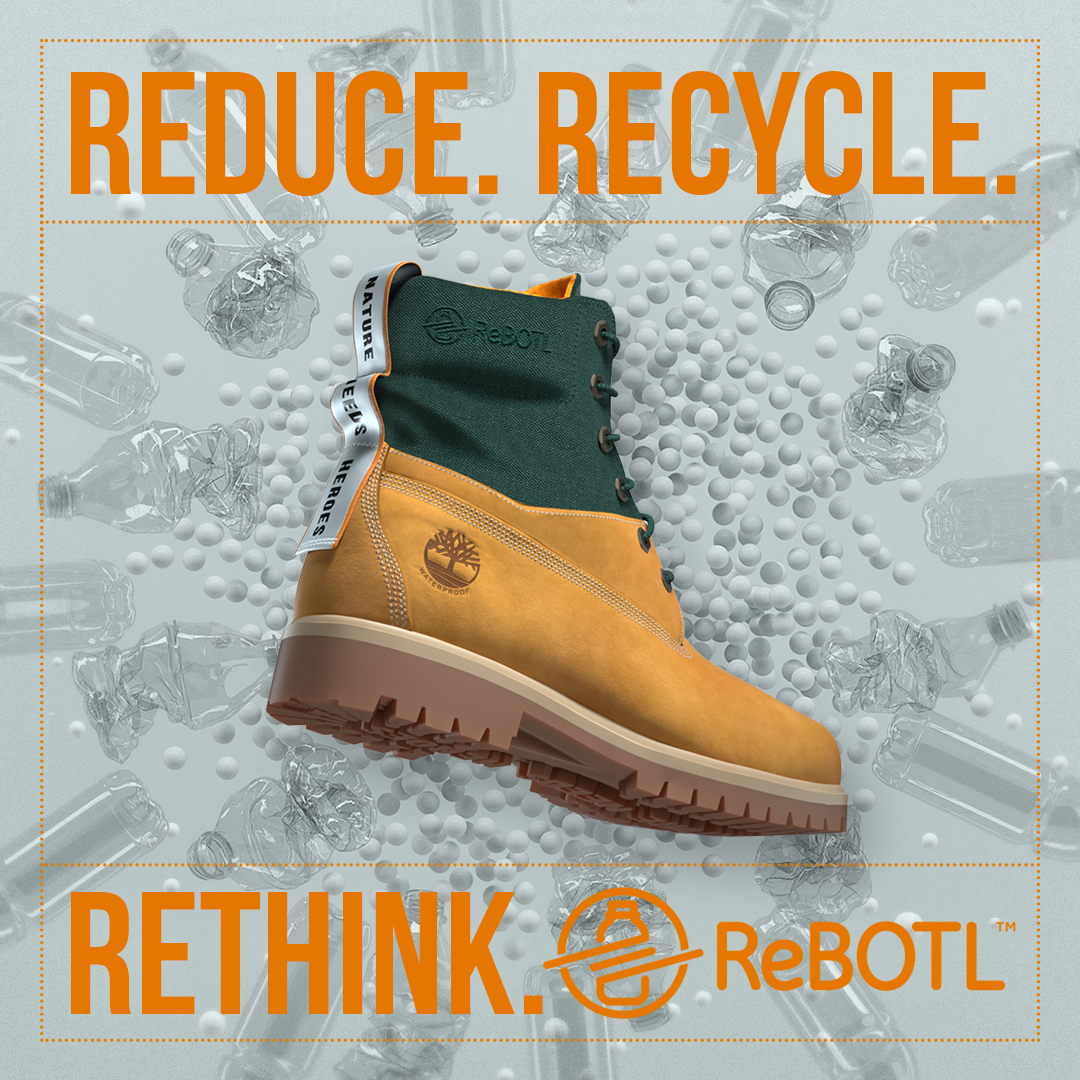
For apparel to become truly sustainable, we must focus on people, planet and product in an interconnected way. That starts with ensuring worker safety and health, prevention of gender-based violence and other human abuses, freedom of association, the right to collective bargaining and fair wages, and strict intolerance for child and forced labor.
By embracing a broader circularity that protects both planet and people, the apparel industry can unlock new revenue streams while working to minimize its environmental impact — and model actions and results for other industries through leveraging our scale for good.
All in all, sustainability boils down to responsibility — putting people and planet over irresponsible profits. Purpose and profit aren’t mutually exclusive. Quite the contrary: The cycle of purpose and profit can create ongoing opportunities to leverage business success that fuels and fulfills purpose, leading to responsible — and sustainable — profits.
Given how “greenwashing” can undermine public trust, sustainability also demands putting proof over promotion — doing first and talking later — and being publicly transparent and real about impact. For a few VF examples:
- This year VF teamed with the nonprofit WaterAid to distribute COVID-19 vaccines to support the Cambodian government’s pandemic response plan, which helped vaccinate more than 20,000 factory workers and 300,000 citizens while delivering vital hygiene supplies to over 100,000 people across five provinces.
- In 2020, the Timberland brand introduced its first pair of boots made of regenerative leather.
- An elevated partnership with Soles4Souls allowed the Timberland and The North Face brands to divert 13 million tons of shoes and apparel from the landfill and recycle the equivalent of more than 380 million plastic bottles into Timberland footwear in our FY2020.
- The North Face brand’s re-commerce platform allows customers to buy high-quality, lightly worn, second-life apparel which saved 37,000 pounds of clothing from the landfill in its first year alone.
- The Napapijri brand’s Circular Series Infinity Jacket — Cradle to Cradle Certified Gold — uses nylon yarn made from discarded fishing nets and other waste.
- The Smartwool brand converted nearly seven tons of wool scrap into insulation for its Smartloft jackets. In the summer 2021, Smartwool teamed up with The New Zealand Merino Company and sister brand, Icebreaker launched the world’s first regenerative wool platform, ZQRX.
- Just this year, The Timberland, Vans, and The North Face brands established a partnership with Terra Genesis International in Thailand to build the industry’s first regenerative rubber supply system. This supply system will grow to support other brands across and outside the industry.
VF’s recent sustainability and responsibility report, Made for Change, details its progress against its commitments, and recognizes that large global companies have greater ability and responsibility to do more, and lead by example. To that end, the report demonstrates how the apparel industry can put safeguarding people and planet into a virtuous cycle with profitability.
The new sustainability and circularity business models the apparel industry needs may be disruptive. But we all also know disruption—however painful—drives creativity and innovation, which fuels success and growth. Which in this case, not only meets the urgent demand for climate action and human rights, but also today’s consumer market that cares deeply about people and the planet.
Those visionary boots have miles to go. But the destination clearly is worth the journey.
This article is sponsored by VF Corporation.
Images courtesy of VF Corporation
More Black Leaders Are Joining Corporate Boards. In the C-Suite, It’s a Different Story


A research team at Black Enterprise spent six months mining documents, including proxy statements, to learn about the representation and participation of Black leaders at the highest levels of corporate America. The results are a mixed bag overall, but last year’s corporate commitments to diversity, equity and inclusion (DEI) may have made some difference in the transformation of more boards of directors across the U.S.
The big number? Within the S&P 500, the number of companies without any Black representation at the board level dropped by almost half — 47 percent to be exact.
That’s only part of the story, however, as “it is way too early to break out the party hats and horns,” the report’s authors write.
First, the big numbers. To start, currently 100 S&P companies lack any Black board members, down from 187 two years ago. The number of companies with Black directors hit almost 400, a 30 percent increase from 2019. Overall, Black directors now hold 425 board seats in the S&P 500, up more than 30 percent over the past two years.
But those numbers are only part of the story in the role Black leaders have in the U.S. business community. Black Enterprise cites an August 2020 study which found only 1.8 percent of the top executive positions in S&P 100 (five out of 279) were held by Black leaders, and two of them have since retired.
Debra Lee, the retired chair and CEO of BET Networks, is among the leaders who are doing their part to ensure more Black professionals have a fair shake at such opportunities. Lee co-founded The Monarchs Collective, a consultancy focused on working with women and people of color so they can gain more board and C-level positions. “We are in an environment where companies are still looking for diverse board members. Some of them are fishing in the same pond that they’ve been fishing in for years,” she told Black Enterprise.
Overall, there’s a sense of cautious optimism. “I have to say that African Americans are getting opportunities to be on boards in unprecedented levels," John Rogers Jr., chairman, co-CEO and chief investment officer at Ariel Investments, told reporter Jeffrey McKinney of Black Enterprise. "Everyone sort of jumped on board, and people realized it’s really critical to do the right thing after the assassination of George Floyd and all the turmoil and heartbreak in our country."
For example, more private equity firms are appointing Black leaders to their boards. Rogers believes this could lead to more companies ranked within the Russell 2,000 doing more to recruit and appoint people of color as directors. Meanwhile, companies including Walgreens Boots Alliance, TIAA and Qurate Retail (which owns QVC and HSN) have brought on Black leaders as CEOs.
But again, it’s clear that adding to the ranks of Black decision-makers at America’s largest companies will take a while. Black Enterprise’s latest corporate directory finds only seven Black chairs of corporate boards and 10 lead directors across the S&P 500.
Image credit: Cytonn Photography via Unsplash
HP’s Expanded Partnership with WWF Aims to Grow Forest Conservation and Restoration
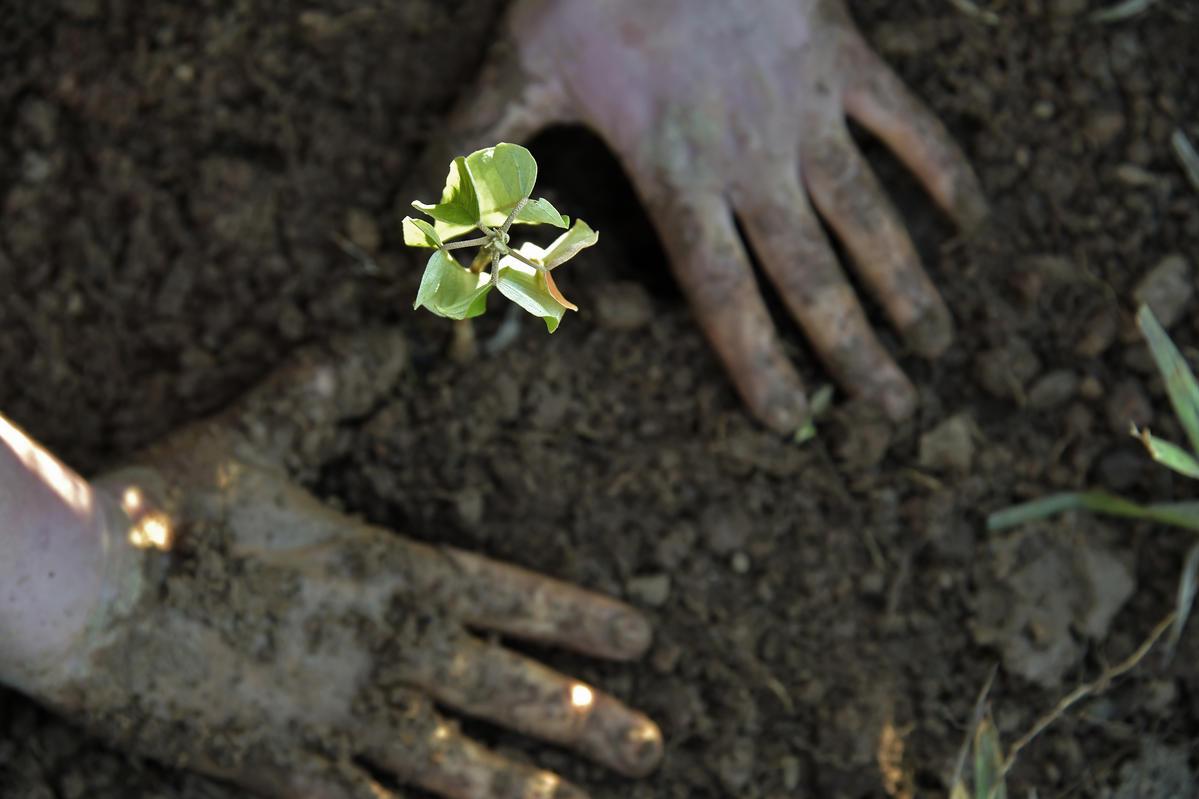
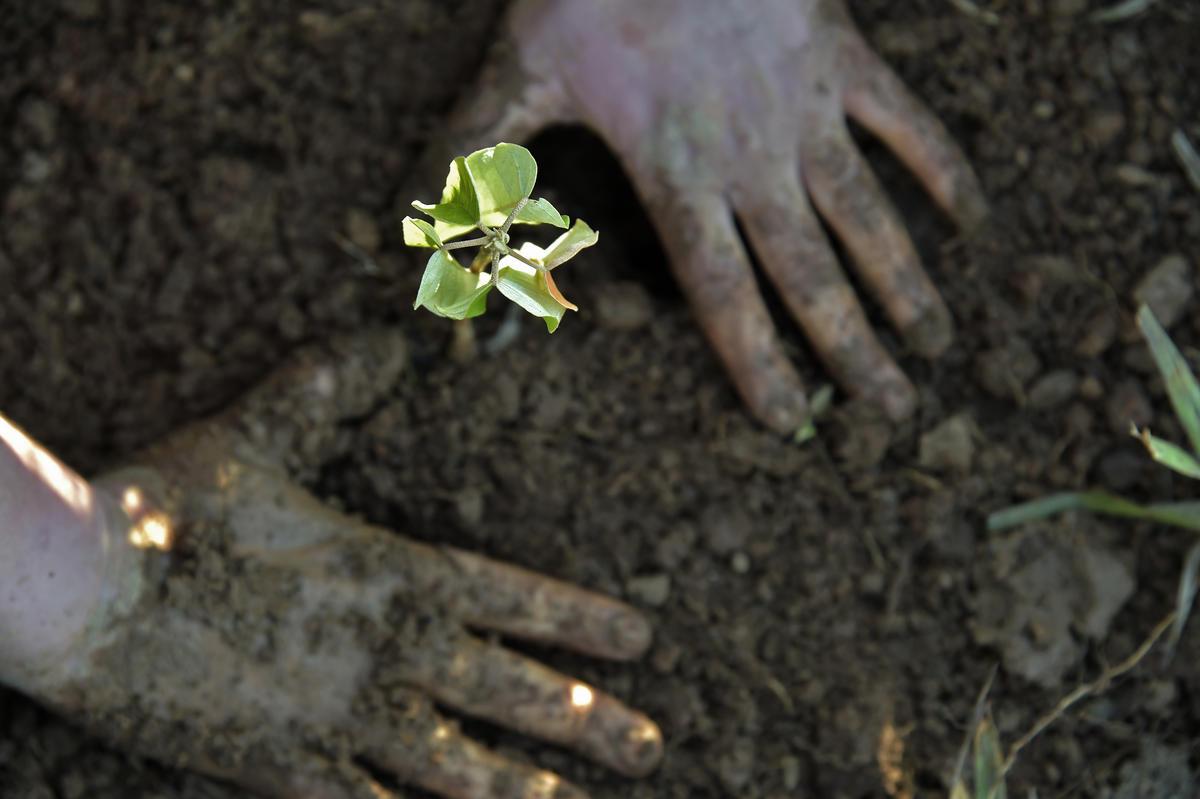
HP Inc. has announced an expanded forest conservation and restoration partnership with World Wildlife Fund, better known as WWF, by pledging $80 million to sustainably manage, conserve and restore nearly 1 million acres of forest. “We're really excited about this collaboration and the opportunities it brings to help us accelerate critically important conservation efforts in landscapes around the world — for people, for nature and for climate,” Linda Walker, senior director of corporate engagement for forests at WWF-U.S., told TriplePundit.
The forest partnership first launched in 2019 with an $11 million project to restore part of Brazil's threatened Atlantic Forest, increase sustainable management of state-owned farms and forest plantations in China, and support critical forest science. That effort is helping restore, protect and responsibly manage a combined area of 200,000 acres.
The volume of capital in the expansion is quite stunning for a business and nonprofit partnership, and it builds on more than a decade of collaboration between the two organizations. This new expansion makes HP WWF’s largest corporate partner in the United States.
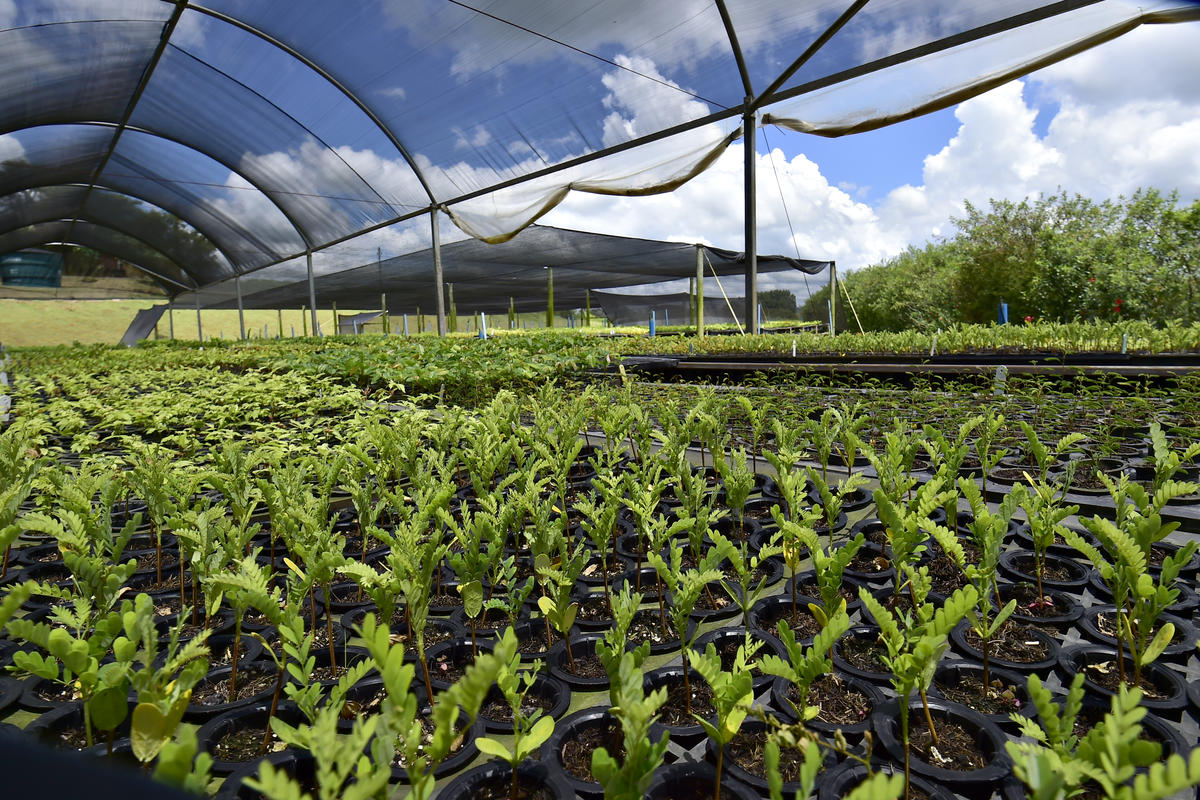
Forest restoration and conservation are key to global sustainability
Deforestation is a major global crisis. Around the world, landscapes are being lost as agribusiness expands, and too often it is global companies that are either directly or indirectly responsible through their long, complex supply chains. “Deforestation and forest degradation account for about 12 percent of greenhouse gas emissions around the world,” Walker explained.
HP’s branded paper and paper-based packaging are made from recycled material and virgin fiber primarily certified to the rigorous standards of the Forest Stewardship Council (FSC). But the company is looking to go beyond that and has set a goal to not only maintain zero deforestation for HP paper but also to counteract potential deforestation and forest degradation for all non-HP paper used in HP printers or other products and services by 2030. That goal is based on something obvious but often neglected when accounting for a company’s environmental impact.
“We know that many some of our customers use non-HP paper in their HP printers,” said Ellen Jackowski, HP’s chief impact officer and head of Sustainable Impact. “So counteracting deforestation for non-HP paper is a pretty bold and leading goal, to go beyond our own footprint and help tackle that for others as well.”
HP can’t force all paper companies around the world to follow its lead and only source FSC-certified and recycled material. So, it is taking a different approach: helping conserve and restore forests to counter the adverse impact of nonsustainable paper being used in HP printers.
“HP is one of the first companies to seriously consider consumer use and its downstream impact and to do it in a way that embraces science and the time it takes and to do it right,” Walker explained.
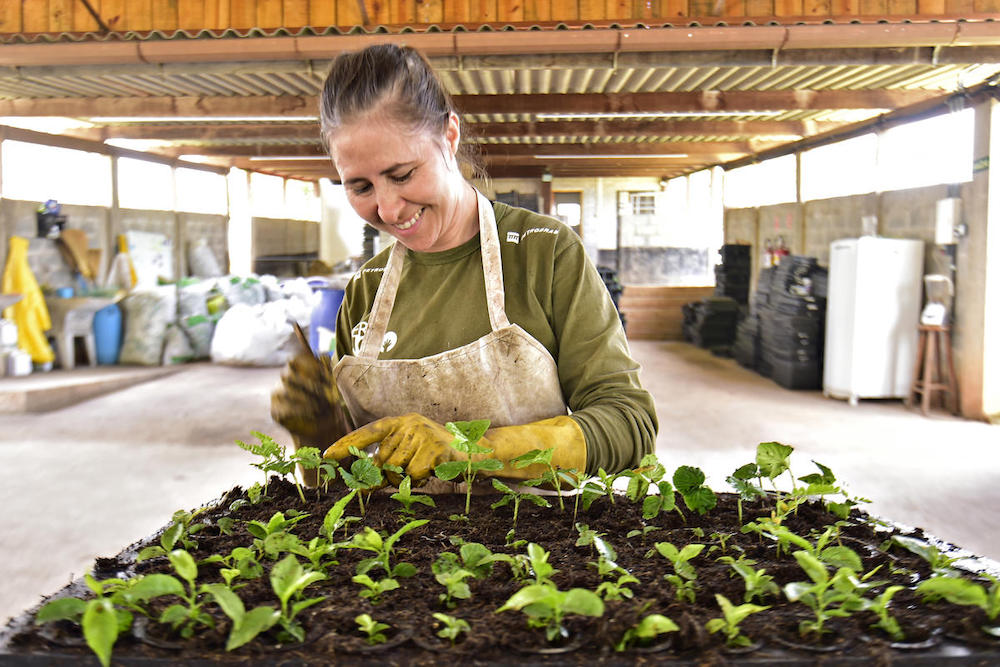
Ambitious yet achievable
Setting ambitious goals is one thing but achieving them is another. Over the years, we’ve seen companies, including many in the tech industry, fail to meet their deforestation reduction goals. HP aims to avoid that by setting goals with clear, actionable steps — backed through partnerships like this with WWF.
“It's not just about the impact we're trying to create within our own operations,” Jackowski said. “But it's really across our entire value chain: how we work with our suppliers, customers, channel partners and the communities that we serve to create sustainable impact.”
WWF and HP will use a science-based approach to effectively estimate the impact of non-HP paper used in HP printers to determine how may acres of forest to target for on-the-ground action. In addition, they will collaborate with community partners to ensure the forest protection, restoration and responsible management projects have a positive environmental and social impact. These efforts will build on WWF’s work with HP in Brazil and China, where community engagement has been key.
“We’re working directly with the local community to make sure there is a community benefit as we're structuring this work and to make sure we're thinking about the biodiversity impacts — not just planting a tree and walking away,” Jackowski told us.
The goal is to make HP “the world's most sustainable and just technology company,” she said, and the company is fully aware that this will be an ever-shifting target. “It's a comparative statement, and when we take bold action, our competitors will certainly be aware of it and may raise the bar,” Jackowski explained. “That is healthy competition that ultimately benefits people, communities and the planet.”
For WWF, this partnership is a model: HP is a major player, but it alone can’t prevent global deforestation. Its example, however, can show other companies in the tech industry and elsewhere how to take action. For instance, WWF is also joining HP’s Sustainable Forest Collaborative, a cross-industry collaboration to demonstrate scientific and commercially viable approaches to keep working forest ecosystems healthy.
“This is an opportunity, and we want more companies to look at ways they can take action for forests that can contribute to both their climate goals and nature-based solutions for climate, for forests, for biodiversity and for people,” Walker said. In fact, it’s already happening, as HP, International Paper, Kimberly-Clark, Lowe’s and Williams-Sonoma are among the companies WWF is working with to reduce their forest footprints through its new corporate engagement program, Forests Forward, which was launched earlier this year.
Reducing emissions from deforestation is important to achieving global climate goals. But effective, science-driven protection, restoration and forest management can do much more as the world’s forests have incredible potential.
“Action for forests around responsible sourcing, restoration and improved management can account for 30 percent of the solution to the global climate crisis and help us keep global temperature rise below 1.5 degrees Celsius,” Walker told us. For now, the goal is net-zero, but going net-positive is possible — and that is the potential of a company truly committed to sustainable impact.
This article series is sponsored by HP and produced by the TriplePundit editorial team.
Images courtesy of WWF
India to Install Nearly 700 EV Chargers on National Highways By 2023


India's latest investment in EV charging infrastructure could help spur more sales of cars like the Tata Nexon, the country's top-selling electric vehicle.
One of the biggest hurdles to electric vehicle ownership is the limited charging infrastructure in much of the world. In an ambitious plan, the National Highways Authority of India (NHAI) plans to add an electric vehicle charging station every 40 to 60 kilometers. With over 40,000 kilometers of national highways, that’s nearly 700 chargers total. This action could help further EV sales and have a ripple effect on the industry.
In an interview with ThePrint, NHAI Chairman Giridhar Aramane said the agency plans to add other roadside amenities as well. “We amended the concession agreement for the wayside amenities to include electric vehicle charging facilities also. Besides, there will be a restaurant, toilets, drivers’ resting rooms, and petrol and diesel dispensing machines, etc.”
The NHAI is taking proposals for these projects, Aramene said: “We have bid out 100 wayside amenities and got a tremendous response. Each wayside amenity has received at least six [or] seven bids. Once the bids are awarded, [the work] will take six months to complete.”
Electric vehicle sales are on the rise in India
Electric vehicle sales in India more than tripled from April 1 to September 30 of this year, with 118,000 units sold. Although this is a relatively modest figure given the size of the Indian market, it does show considerable growth in that period. At the same time, a significant semiconductor shortage has hindered the sales of internal combustion vehicles.
Experts attribute the growth in sales to various factors, including government incentives, expanding charging infrastructure, falling battery prices and outreach by manufacturers. In 2019, the Indian government announced it would lower the goods and services tax on EVs from 12 percent to 5 percent.
In addition, the consumer base is getting wider, whereas in years past it was primarily businesses purchasing EVs. “With better awareness and acceptance for EVs, there is traction even from the rural markets in the non-commercial segment too,” Sulajja Firodia Motwani, CEO of Kinetic Green Energy and Power Solutions, told the Economic Times, an Indian publication.
Tata Motors and EV sales
The top-selling electric vehicle in India is the Tata Nexon, an SUV and one of two EVs that the Indian automaker Tata Motors manufactures. Tata Motors has aggressive plans in the EV market and recently announced raising $2 billion from private equity firm TPG to further pursue electric vehicles.
"The aim is to lead the EV charge in the market," Shailesh Chandra, head of Tata Motors' passenger vehicles business, told Reuters. She added that to achieve this, the company will work with investors focused on a "carbon-free world."
Tata Motors plans to release 10 new battery electric vehicle models by 2025, said Chairman Natarajan Chandrasekaran. “In India, EV penetration in our portfolio has now doubled to 2 percent this year, and we expect the penetration to increase exponentially in the coming years. Tata Motors will lead this change in the Indian market,” he said while addressing shareholders in the annual report for FY 21.
A booming EV market relies on several key factors converging and is a bit like a jigsaw puzzle. Consumers want a reliable charging infrastructure to ensure they can travel without too many constraints. Government incentives help offer price parity with internal combustion engines, furthering EV sales.
Yet an investment in a charging infrastructure seems illogical if there isn’t a certain amount of EVs on the road. This makes India's plans to develop a national highway charging corridor very appealing for the future of the EV market and the clean transportation movement.
Image credit: Tata Motors
Raising the Recycled Paper Bar for Better Branding


When recycled paper first became mainstream, it was mainly confined to cardboard, paper towels and other uses that tolerate a certain degree of coarseness. Those days are long gone. Now, waste paper can be processed to yield products that are just as clean and bright as their virgin counterparts. That opens up new opportunities for brands seeking a sustainable profile, even in the previously challenging area of direct-contact food and beverage packaging.
The next big step for recycled paper
Packaging and shipping materials, napkins, paper towels, stationary, craft papers, newsprint, books, magazines, various kinds of office papers, and even kitty litter are among the many different kinds of paper products now made partly or entirely with recycled fibers.
Foods and beverages are becoming another important growth avenue for recycling stakeholders, as consumers become more accustomed to the idea that recycled paper can be safely used in that area. However, until recently the U.S. Food and Drug Administration (FDA) only allowed recycled paper in food and beverage packaging with a polyethylene coating or other barrier. The concern was that trace amounts of ink and other chemicals used in papermaking and recycling could contaminate foods and beverages.
In past years, that created a challenge for brands seeking to simplify their packaging, eliminate petroleum-based plastics, and source 100 percent recycled materials.
In 2018 the recycling industry finally reached a groundbreaking, first-of-its-kind milestone when the FDA approved Sustana Fiber’s proprietary EnviroLife recycled fiber for direct-contact food and beverage packaging. Among many uses Sustana lists takeout containers, including hot beverage and soup containers, as well as pizza boxes, bread bags, coffee bags, meat and cheese wrapping, and clamshell-type containers.
Emily Olson, director and sustainability ambassador at Sustana, calls EviroLife the company’s “hero product.”
“We’re seeing a shift away from the linear economy of take, make and waste, both from consumers and brands, and we want to engage in a circular economy,” Olson told TriplePundit. “EnviroLife 100 percent recycled fiber is compliant with FDA standards for use in direct contact with food. We can partner with global companies, for example, to put recycled content into coffee cups and sandwich wraps for fast food.”
Consumers are primed to accept the use of recycled paper in direct-contact food packaging, Olson observed. Recycled paper content is already commonplace in cereal boxes and other non-contact packaging. With the assurance of FDA approval, direct food contact is simply the next step.
A big step up for the circular economy
Thomas Fu, vice president of global innovation at the packaging company Sabert Corp., also emphasizes the significance of EnviroLife being FDA compliant.
Fu observes that the use of soy ink and other environmentally-friendly substances in food packaging has made a difference, and EnviroLife is a next-level improvement for brands seeking to disentangle themselves from the plastic supply chain. The availability of direct-contact recycled paper packaging also coincides with government policies aimed at reducing the flow of plastic waste, including the European Union’s Single-Use Plastic Directive.
“Especially in the last three years, the pace of innovation has picked up,” Fu told us. “We see significant innovation in sustainable packaging from raw materials, to design, to adoption by brands in the marketplace, through the supply chain.”
The now-familiar demands of environmentally conscious consumers have also played a strong role. “One thing we observe is that more and more brands are making public commitments to sustainable packaging in paper products,” Fu said. “That public commitment to big sustainability goals goes back to consumer expectations, especially with the younger generation. They are clearly driving it.”
Yes, we can science our way out of this
Movie-going audiences got a Hollywood style perspective on the zero waste, circular economy of the future through the 2015 film The Martian, in which Matt Damon’s fictional astronaut survives the harsh environment on Mars through a combination of solar power, organic farming and cutting-edge technology.
Sustana brings a similar sustainability trifecta to the packaging industry by innovating solutions that are better for business, the environment and society at large. The company’s Sustana Fiber plant deploys a chlorine-free processing system that separates moisture barriers in cartons and other containers to be turned into new products like toilet paper, tissues and paper towels. It also captures recycling byproducts for reuse as animal bedding and other purposes.
The emphasis on continued innovation enables Sustana to provide brands with a proactive edge on growing consumer interest in the circular economy.
“We are very aware of the consumer and the end user. We recognize we have a very unique opportunity to partner with brands to meet sustainability goals,” Olson explained, taking note of research indicating that consumers have become more satisfied with sustainable products over the past three years.
“More and more products are being put on the market to help consumers make different choices, compared to even five years ago,” she told us.
The growing consumer preference for environmentally-friendly products has become a powerful driver of both public policy and private-sector activity. As the recycled paper field becomes more crowded, brands that take advantage of new recycling technologies can stake out a position ahead of the pack.
This article series is sponsored by Sustana and produced by the TriplePundit editorial team.
Image courtesy of Sustana
Do Your Employees Know About Your Company’s DEI Work? Survey Says: They Are Very Interested in a Four-Day Workweek
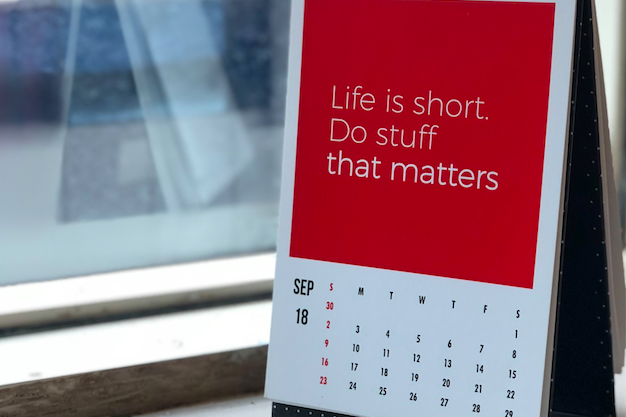

The executives might be proud of your company’s diversity, equity and inclusion (DEI) efforts. But showing pride and announcing such work in press releases and blog posts is quite different from communicating them internally.
At least, that’s the feedback from research the good folks at HR Brew recently completed with the help of the Harris Poll.
If there’s progress on DEI initiatives, many employees may not be aware of it. HR Brew’s data reveal that only a paltry 13 percent of employees said they could vouch that their companies had made the effort to expand their diversity and inclusion programs. Almost half of them said there was no apparent effort to improve diversity in the workplace, and almost 4 in 10 said they had no idea how their company’s leadership was tackling this problem.
Obviously, that is not news anyone heading DEI at a company, or any executive for that matter, want to hear. Part of the problem, of course, is communicating what your company is doing in the first place. But a larger challenge may be the details of what companies are actually accomplishing on the DEI front.
As is the case with environmental programs and sustainability strategies, many DEI objectives that companies have announced are in the abstract. Think of the problem many people have grasping climate change: If the threat is far off and companies’ solutions have until 2030, 2040 or even 2050, it’s easy to brush off that information, especially if there is no concerted attempt to update employees and other stakeholders on any progress. Out of mind and into 2030 could very well mean: out of sight and memory.
A similar theory applies to DEI. Many goals that companies have articulated, especially within the tech sector, talk about expanding and diversifying the pipeline of talent by 2025 or so. And if that same company is making such promises but not publicly releasing any data on workforce race, gender or ethnicity, well, again, it’s hard to grasp what, if anything, the company is achieving on this front.
Plenty of companies have been rolling out stories about a particular woman or person of color on staff who are doing amazing things within the firm. While those can make for a nice post on Medium or a company’s blog, in the bigger picture, trotting out such employees can add to the sense that many of these same employees, whether they are a woman, fall within a racial minority (or both), are being tokenized. Such actions also results in more work — thereby one reason why many female employees and employees of color are feeling more burnout and conflict about returning to the office.
The tepid response to DEI work is left in the dust by intrigue over the four-day workweek, an idea some companies have already been testing out. The HR Brew/Harris Poll survey found 83 percent of employees are all-in on the idea. In fact, 87 percent said they would work longer hours daily to get that extra day off. But there’s a trade-off: Almost 60 percent said trading in a shorter workweek for a smaller paycheck is a nonstarter.
Gen Z, which appears overall determined to rewrite the rules of work, is one demographic that shows enthusiasm for the four-day workweek. But that won’t be enough for them to remain engaged on the job: One survey found that 87 percent of Gen Zers believed their employers’ progress on DEI was “extremely important.” Flexibility on working hours is only one tool in the kit, and younger workers clearly expect much more.
Image credit: Manasvita S via Unsplash
How Equitable Is Marc Lore’s Vision for the City of Telosa?
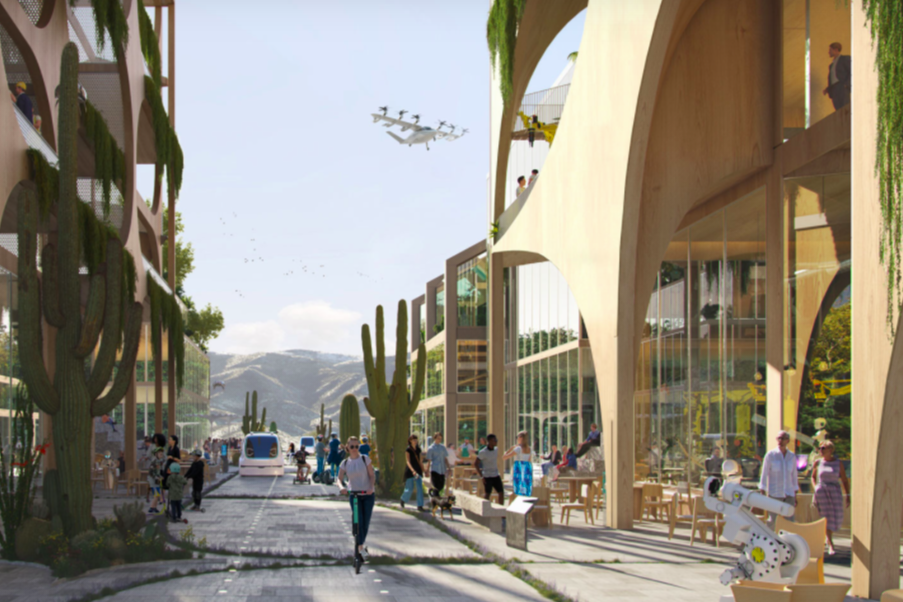

Utopia is a centuries-old genre that aims to answer the question: How can we create a better world for the environment and humanity? When people try to realize a utopian vision, though, the result is often the opposite. We could very well see this with Telosa.
Earlier this month, former Walmart CEO Marc Lore made headlines when he announced a plan to build “the most sustainable [and inclusive] city in the world.” The future city of Telosa, meaning “highest purpose,” is envisioned as a land endowment in the U.S. West for a projected 5 million people. At the outset, the project will cost $400 billion and be built from the ground up with low-carbon technology, sustainable building materials and efficient public transport.
There are a few positive elements at play here. The goal of a land endowment — the centerpiece of Lore’s vision — is to invest in the long-term financial interest of the beneficiaries, i.e. future Telosans. Now that monorails and self-driving cars are no longer a question of how but when, the city also aims to help people and cutting-edge tech coexist in harmony. As the creative force behind the Copenhill waste-to-energy plant ski slope, architect Bjarke Ingels, Lore’s collaborator, is a good choice to make this happen.
On the other hand, what does it mean for capitalists like Lore to build the future of inclusivity? In a statement about the future Telosa, Lore proposes land endowment as a form of “inclusive growth.” It’s a major feature of his new economic model of Equitism, a version of capitalism that reframes land ownership to “set the global standard for urban living and expand human potential by becoming a blueprint for future generations.” His ideas lean strongly on inclusive design, with a focus on bikes and pedestrians.
But sustainability and inclusivity don’t necessarily go hand in hand. In this sense, we might see Telosa as a potentially misguided response to climate change. As extreme weather patterns gnaw at the country from the coasts, people will move inland as resources become scarce. Because we live in a deeply unequal world, we know communities of color will be harder hit.
Back to Lore, who plans to build a hallmark viewing tower called Equitism as homage to his economic philosophy. At first glance, this hits a strange chord: Towers are naturally exclusive because they are set apart from the surrounding landscape. Plus, the name seems better suited to Margaret Atwood’s The Handmaid’s Tale or Barney Stinson’s video CV.
Many believe equity involves building something new rather than simply patching what we have - and this includes entities from Lore to Black Lives Matter. Though the Telosa site outlines commitments to diversity, equity and inclusion, the founder and lead architect are still white and male. Given the enormous link between environmental justice and racial justice and renewed calls for deconstructing systemic racism, Lore’s idea begs the question: Who is the city really for? Who are the 5 million people with the money to move to and live in Telosa?
To become real, utopian ideas require collective, large-scale buy-in. Lore aims to build a “new model for society.” But the creators of the Red, Black & Green New Deal, for example, argue equitable environmental change should be led by those climate change affects most.
If Lore is after large-scale impact, he might look to MacKenzie Scott’s idea. The ex-wife of Amazon founder Jeff Bezos made waves in the philanthropy sphere when she gifted more than $4 billion to 384 groups across all 50 states, Puerto Rico, and D.C. Her record-breaking donations spanned social issues from food and housing insecurity to medical debt and domestic violence. Most were in the form of unrestricted grants that were specifically intended to benefit the marginalized groups disproportionately affected by the pandemic.
Let’s be realistic: Billionaires alone can’t solve climate change or lead us forward into the scary world just over the precipice. But they can certainly help in the fight to make more cities more sustainable.
American infrastructure is long overdue for a crucial look at the systemic racism embedded in it. While researchers figure out how best to apply funds from the 2021 infrastructure bill, billionaires with a vision and cash to spend might better put their money towards reducing inequality in the urban planning of the here and now.
Improving infrastructure with, say, solar energy and fossil fuel-free steel is likely cheaper and more sustainable than building from scratch - and can be applied more evenly across the board. Though it may come without the legacy or global recognition, it will help a lot more people faster.
Image credit: City of Telosa website
Why Spooky Season is Also Voting Season
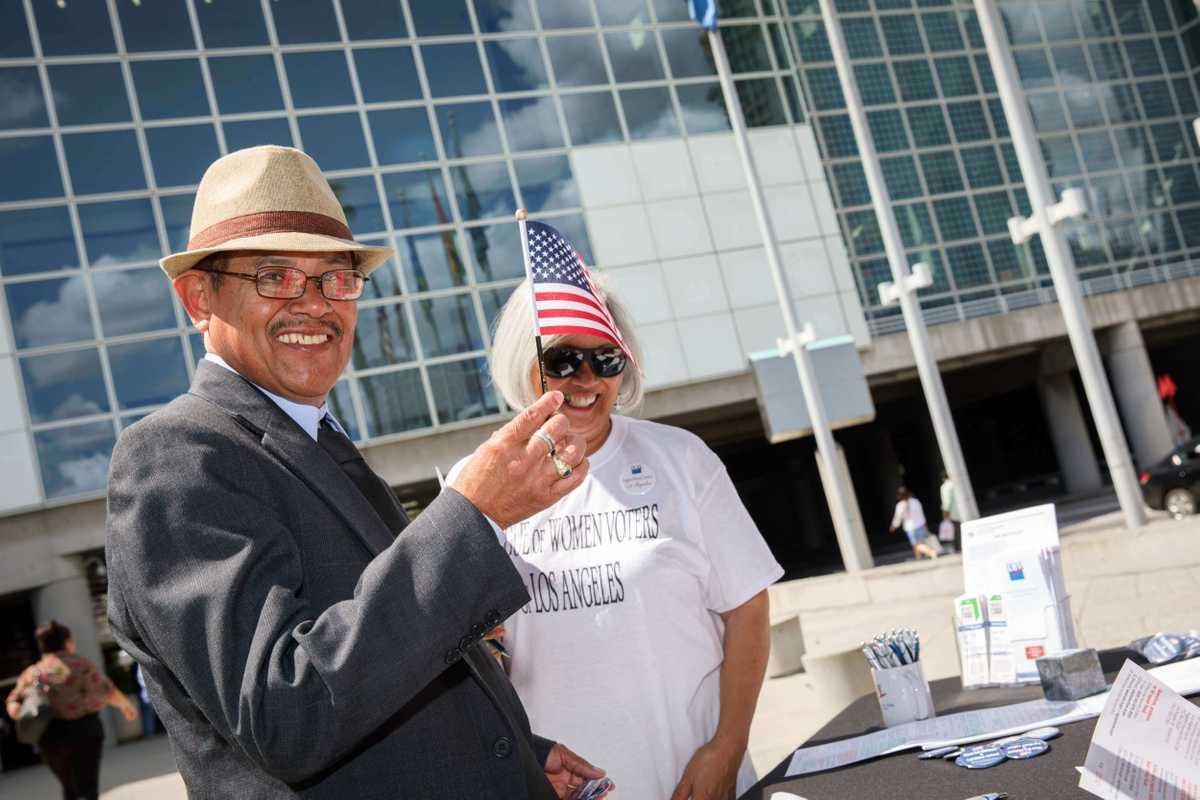
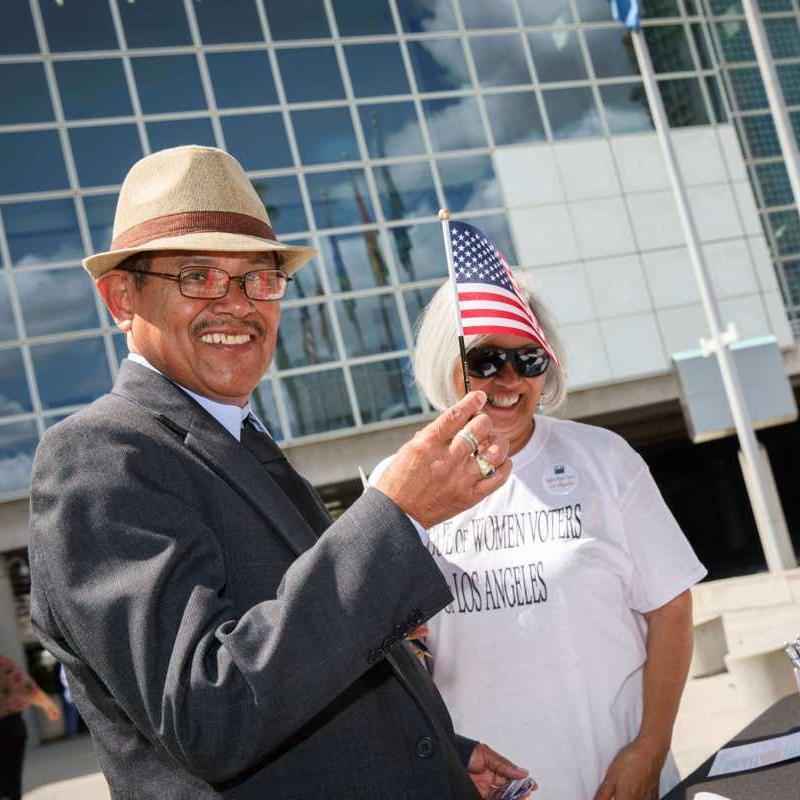
I have to ask: Have you voted yet? I know, I know - it feels like we just voted. But this fall communities big and small across the country have elections for everything from congress to who serves on local city councils. And the good news is - you can cast your ballot early!
Democracy can often feel like an endurance sport. The truth is that although elections like the one we just experienced in 2020 get most of the attention, every opportunity to decide who represents you or the direction your state or community takes is essential.
That’s one of the many reasons we created Vote Early Day, an annual civic holiday (on October 23rd - today - this year) committed to one thing: making sure every single eligible voter in America knows when, where, how and why to vote early in their elections, because Election Day isn’t the only day to cast your ballot –– it’s just the last day.
The 2020 presidential election was an unprecedented year for voting. Hundreds of millions of people showed up on or before Election Day and shattered turnout records, something that wouldn’t have been possible at the height of a global pandemic without the ability to vote early.
That’s exactly why Vote Early Day was created. Everyday obstacles like a busy schedule, an unexpected emergency, or traffic jams should never stop an eligible voter from doing their civic duty and making their voice heard, and when you vote early - they won’t.
Vote Early Day is a new civic holiday powered by nonprofits, businesses, election administrators and creatives who all believe that voting early is the best way to make sure eligible voters do their civic duty and participate in our democracy.
Launched in the midst of the COVID-19 pandemic, Vote Early Day was a critical way to ensure voters didn’t have to choose between their health and casting a ballot, and with the help of 2,700+ partners across the nation, we turned out more than 3 million voters on Vote Early Day alone. You read that right –– on our inaugural year, we contributed to over 60% of Americans casting their ballots early in 2020.
While local city council races don’t typically get the media attention of a presidential election, writing 2021 off is a mistake. This fall, critical state and local elections are happening from Seattle to Miami. From the water you drink to the roads you drive and how public safety is managed in your community, local elected officials make decisions that have a meaningful impact on your daily life.
Despite that, the data show that only one in five voters turnout for local elections. Vote Early Day not only provides Americans with resources to make a plan to vote early but also serves as a reminder that every year is an important year to vote. This year, Vote Early Day is on October 23, a day when most every voter has an option to vote early by returning their mail ballot or voting in-person. Mark your calendars! More than 1,200 partners representing every corner of America –– north, south, east and west –– have signed up to celebrate with us this year.
From college campuses to local nonprofits to national technology companies – people are gearing up this week to help their members, supporters, and constituents vote. A group focused on random acts of kindness in Cleveland is hosting live DJ’s and food trucks at the county election office. An Election Administrator in Boulder, Colorado is hosting a ballot drop off location at a local brewery. Drag queens are premiering a Vote Early Day video and the League of Women Voters of New Jersey is hosting celebrations at the polls where the ability to vote early in-person is available for the first time ever. So many amazing partners are helping Americans vote early, and it’s not too late for you to join the celebration.
Learn more about your state’s early voting rules and cast your ballot on or before October 23. All of this, together with your eager participation in our country’s most crucial democratic processes, makes for a more successful - and less stressful - Election Day.
Image credit via Vote Early Day public library of photography